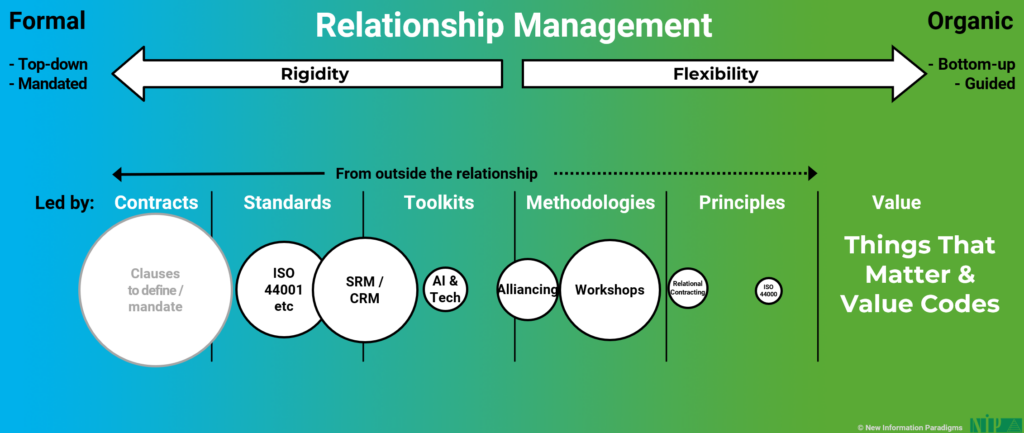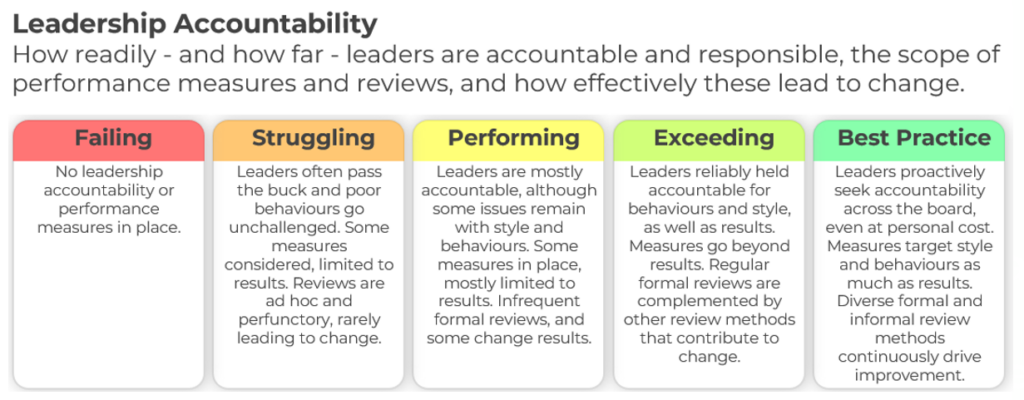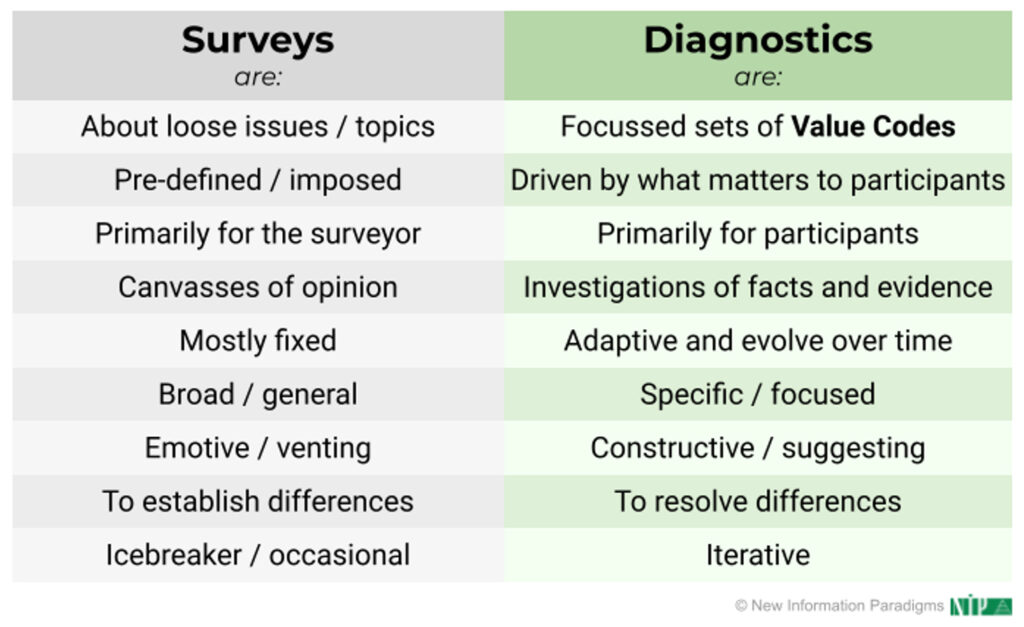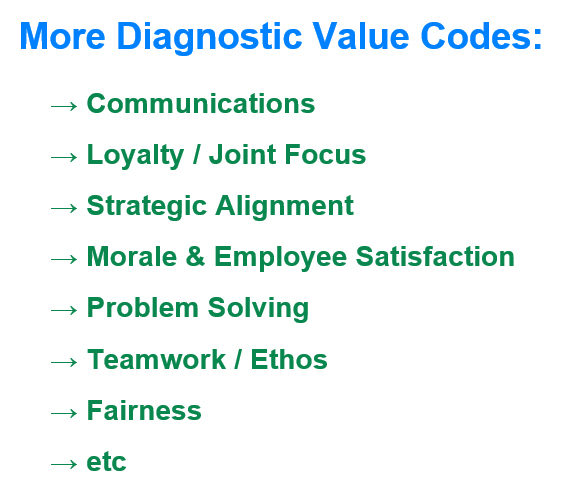Negotiating Value in Contractual Relationships: Part 3

- Part 1: We’re Not Aligned on Value
- Part 2: “Negotiation” Could Be So Much More
- Part 3: Value Management – “Negotiation” In Action
Our friends at WorldCC regularly produce a report on the most negotiated contract terms, comparing and contrasting them with the contract terms considered most important.
The latest edition of this report got us thinking about “negotiation” and how Value Management supports and enables it in its widest sense.
In this third and final part, we see what negotiating value – with “negotiation” and “value” both considered in their widest senses – looks like in practice and how it’s done: Value Management.
Last time, we saw how the need to move beyond contracts is increasingly accepted, but also that the approaches then adopted all fall short of directly addressing the value of relationships.
We also how it is possible to broaden our conception of “negotiation” as the starting point for changing all this.
And with that broader conception in mind, we can now fill in the missing piece of our relationship management spectrum from Part 2:

Let’s now see why the Things That Matter and Value Codes plug this gap, and help us “negotiate” Value in its widest sense.
The Things That Matter
As we discussed in Part 1, the Things That Matter are what constitute Value in a contractual relationship, and Value is the missing piece in how we’re trying to manage relationships beyond contracts.
The Things That Matter form a shared agenda, they give you a common language (so even on their own, the benefits for communication and clarity should be obvious), and they’re what need “negotiating”, in all senses of the word throughout the lifecycle.
However, they’re what “negotiations” currently, bound to the contract, mostly fail to cover, because contracts can’t really cover these things.
And just surfacing the Things That Matter isn’t enough; you need to do something with them.
We saw in Part 1 how this is hard, because they’re not immediately actionable, they’re increasingly subjective, and they cross-boundary.
What’s needed is to introduce a degree of objectivity, and that’s where Value Codes come in.
Value Codes
Value Codes are measures that address each of the discrete “topics” within a set of broad, high-level Things That Matter, e.g.:

Value Codes are what ground the Things That Matter; they capture what good look likes; and they therefore provide both the content and the process for negotiation in the wider sense that we’ve been looking at.
When each individual evaluates a Value Code, the evaluation statements provide the content for the process of “negotiating” which statement best “fits” how they think things are.
Next, when individual perspectives are compared, there is another process of “negotiation” between those perspectives to arrive at a consensus.
There’s then a further negotiation to agree a target.
And, of course, there are multiple Value Codes, so there’s a negotiation of priorities between targets, and of how to most effectively use scarce resources.
Next, the evaluation statements themselves also help identify and suggest the improvement actions needed – in other words, they start you off on the content of what’s needed to “negotiate” the gap to the target:

So Value Codes are how you progress, how you navigate, how you negotiate the Things That Matter.
But how do you deliver all this?
Online Diagnostics
Well, what we’ve found, is that only online diagnostics really do the job:

Online diagnostics are used to factor out the Things That Matter – such that Value Codes can be developed – and online diagnostics to then use that clarity and precision to more effectively harness all the great stuff that’s contained within these other approaches.
But what makes a diagnostic a diagnostic?

Well, the first thing to say is that diagnostics are absolutely not surveys.
Yes, those terms sometimes get used interchangeably, and there are some superficial similarities – and, like surveys, participants are asked to record their perspectives, with several options to choose from – but that’s where the similarities end.
Diagnostics are about delivering Value Codes, so they’re focussed, and that’s the first of several key distinctions to pick out from the table on the right, where the next two rows of that table are particularly critical (and flow from the first).
So, diagnostics emerge from the Things That Matter to participants; this isn’t someone else’s pre-defined agenda or priorities being imposed from outside.
And where the primary purpose of surveys is generally to gather information for whoever’s running the survey, diagnostics are primarily to benefit the participants…
What participants are facing changes, and that means that diagnostics adapt and evolve over time; related, diagnostics are also intended to be iterative; not one-off or occasional.
And this all supports the ongoing, constant aspect of negotiation we looked at in Part 2.
All this richness and detail means that an online diagnostic needs to come with rich reporting capabilities, at multiple levels of detail:
- You need to be able to see overviews.
- Given the precision of the Value Codes themselves, you need to be able to really drill down.
- You need to be able to compare perspectives: critical to all we’ve been saying about negotiation.
But why does all this have to be online? Well, several reasons, all aimed at maximizing the quality of input from as many people as possible:
- Secure: we also recommend anonymity to create a completely safe space).
- Inclusive: giving input online is far less “confronting” than face to face interviews or workshops, so you can include people that either wouldn’t be at workshops or that are more introverted
- Scalable, to any number of relationships and to any number of participants: “negotiation” is everyone’s responsibility, but most people currently aren’t at the negotiating table, despite being profoundly affected by what happens there. The ability to involve everyone not only gets you the wisdom of crowds, but people getting to contribute is great for their sense of involvement and responsibility, and for their morale.
- Immediate: there’s no copying and pasting to collate data.
In summary, online diagnostics are transformative: transformative content, a transformed process for engaging with that content. and a transformation with what you can do with the feedback.
Value Management
Put these three elements together – Things That Matter, Value Codes and online Diagnostics – and you’ve got the core of what we call Value Management.
Ideally, the Things That Matter would be factored-out right at the start of the contracting lifecycle, Value Codes would then be put in place, and then – alongside the contract – the platform would have been laid for “negotiating” value in its widest sense on the widest possible scale, through the constant iteration and insights of Diagnostics.
But, and this is a big but, organisations are where they are, and jumping straight in with a new relationship is usually going to be too big a leap.
Also, in most cases, the most immediate priorities are going to be in existing relationships, with existing contracts.
You’re therefore looking to focus on areas that are crucial to success, whether or not they’re in the contract, and – as we saw in Part 1 – crucial areas not covered in contracts are likely a big target.

To the right are some examples from our off the shelf Contractual Relationship Diagnostic:
And then, from the patterns that emerge in feedback, you’ll start to factor out the Things That Matter (i.e. the Things That Matter-to-Value Codes process can also work in reverse), and you’ll also get a sense of how fragmented people’s perspectives are.
Both of these will set you on the road to wider engagement… to confirming the reality of the situation… and to start getting to grips with it.
In other words, through Value Management, you will finally be negotiating the Value of contractual relationships!
Contact us to get started!

